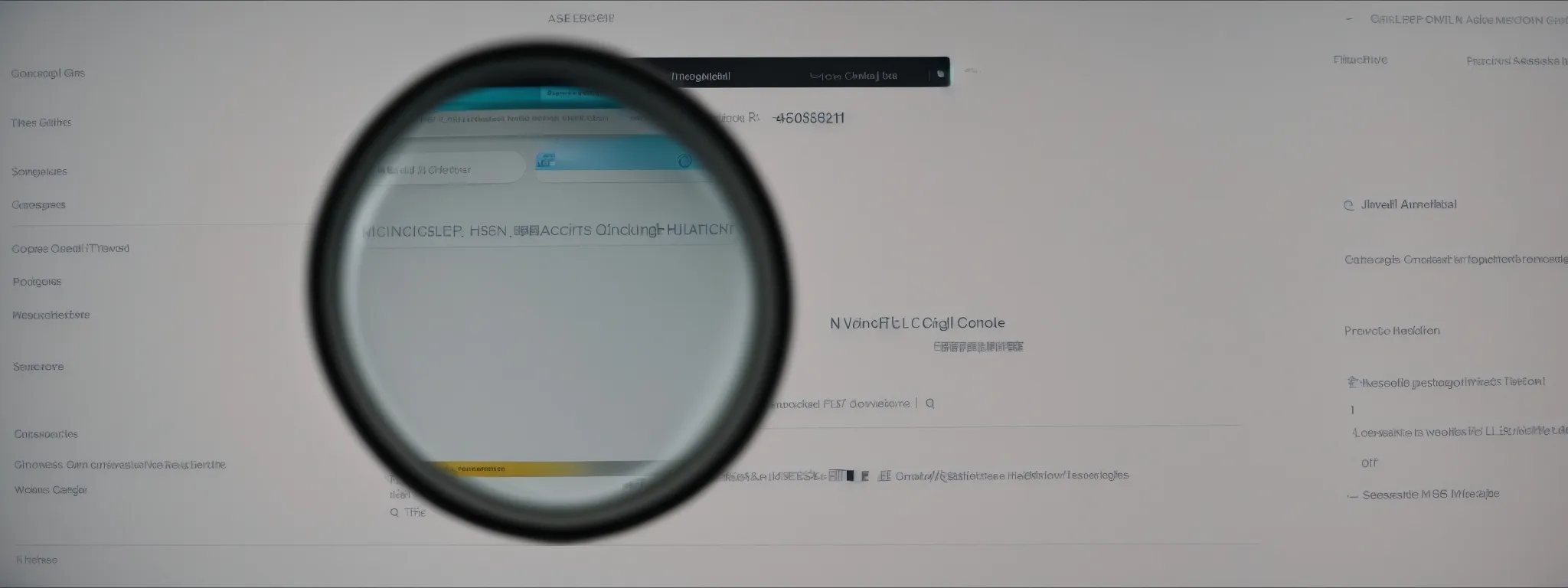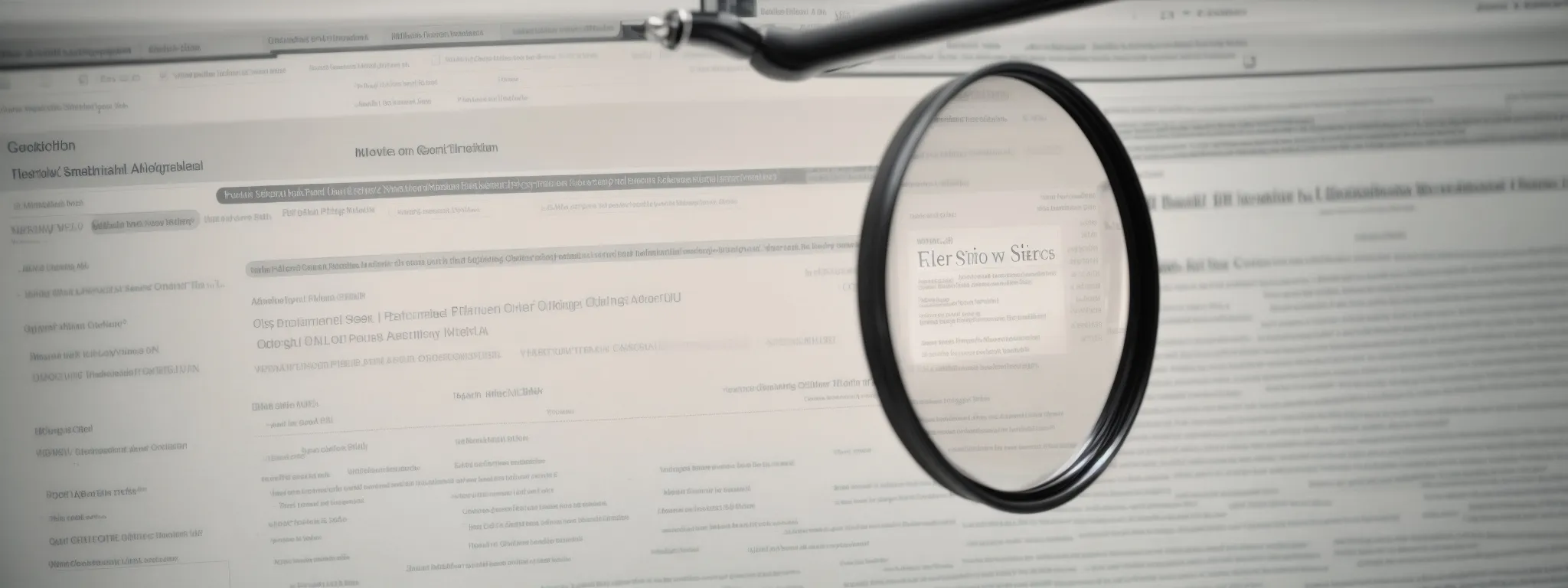6 SEO Experiments That Will Blow Your Mind
SEO Experiments That Will Astonish You: Discovering What Works In the dynamic realm of Search Engine Optimization, the digital alchemists at LinkGraph have consistently pioneered SEO experiments […]
SEO Experiments That Will Astonish You: Discovering What Works
In the dynamic realm of Search Engine Optimization, the digital alchemists at LinkGraph have consistently pioneered SEO experiments to refine the arcane craft of ranking web pages.
Drawing back the curtain on these trials reveals a trove of strategic insights, particularly on the subject of on-page elements, capable of drastically altering a website’s visibility within Google search results.
Conjuring more clicks and fostering user engagement, these trials extend from the subtle art of title tag enhancements to the strategic use of schema markup for an alluring SERP presence.
In this article, readers will embark on a journey through SEO methodologies that wield the power to transform and fortify their online presence.
Keep reading to discover the sorcery of SEO and how LinkGraph’s unparalleled expertise can amplify your brand’s digital footprint.
Key Takeaways
- Title Tags and Meta Descriptions Are Pivotal for Boosting Organic CTRs and Ranking in Search Results
- Schema Markup and Rich Snippet Optimizations Are Strategic for Increasing Visibility in SERPs
- Image Optimization Influences SEO Performance Through a Balance of Visual Appeal and Technical Efficiency
- Strategic Header Use Contributes to Improved User Interaction and Organic Search Rankings
- LinkGraph’s Meticulous SEO Experiments Are Key to Understanding and Improving Digital Marketing Strategies
Unveiling the Power of Title Tag Tweaks

In the labyrinthine world of Search Engine Optimization, the efficacy of a title tag in the architecture of a successful SEO strategy cannot be understated.
Making granular adjustments to title tags is a classic yet often overlooked technique.
Experts, including those at LinkGraph, utilize rigorous SEO experiments to distill the essence of potent title tag variations.
These variants are not only about captivating the searcher’s attention but also aim to boost organic click-through rates (CTRs), a critical marker of user engagement.
By meticulously choosing variants to test, analysts can gather invaluable insights into the interaction between search engine algorithms and user behavior.
Through careful analysis and interpretation of the data, businesses can hone their digital marketing strategies for a future that promises higher engagement rates and enhanced conversion potential.
Choosing Variants for Testing Your Titles
Embarking on the journey of title tag optimization requires a Strategic Approach to Selecting Variants for testing. The team at LinkGraph, adept at search engine optimization, suggests pinpointing title tags that blend target keywords with user-centric language to maximize relevance and capture the searcher’s intent.
With the influence of machine learning algorithms like RankBrain in Google’s search results, it is imperative to choose title tags that strive for a balance between SEO content and compelling, natural language to engage and convert users. Iterative testing steered by LinkGraph’s SEO services ensures that the nuances of every title are scrutinized to solidify their place in top-ranking search results.
Analyzing the Impact on Click-Through Rates
Analyzing the impact on Click-Through Rates (CTRs) provides a lucid representation of how well title tag tweaks resonate with users. By tracking the shifts in CTRs after adjustments are made, LinkGraph’s SEO services unlock a treasure trove of data, reflecting user preferences and highlighting successful modifications:
| Original Title Tag | Variant Tested | CTR Before Change | CTR After Change |
|---|---|---|---|
| Best Chocolate Chip Cookies Recipe | Ultimate Chocolate Chip Cookies – Try Now | 2.5% | 4.1% |
LinkGraph’s focus on enhancing organic CTRs typifies the meticulous attention to detail required for an elevated SEO strategy. Each data-driven adjustment steers a web page’s narrative closer to the desired outcome: heightened user engagement and organic search ranking elevation.
Interpreting the Results for Future Strategies
Interpreting the Results of SEO experiments, like those of title tag adjustments, is pivotal for forecasting future digital marketing success. LinkGraph employs a strategic approach, utilizing the collected data from these experiments to refine their client’s ongoing SEO campaign and inform the creation of new, more effective strategies.
The outcome of title tag tests provides LinkGraph’s SEO Experts with the intelligence needed to anticipate market trends and searcher behaviors. This foresight enables the tailoring of a website’s content strategy to the evolving dynamics of search engine algorithms and user interaction patterns, thus securing a competitive edge in organic search rankings.
Meta Description Magic: Boosting Attraction

In the grand theater of SEO experiments, the sotto voce of meta descriptions plays a pivotal role in orchestrating user attraction to a website.
The artfulness with which these snippets are crafted directly influences user engagement and ultimately determines the success of a page in the digital realm.
Businesses that focus on refining their meta descriptions often witness a remarkable transformation in their website traffic, a testament to the subtle yet potent power of well-calibrated words.
LinkGraph’s methodical approach in this realm of SEO experiments distinguishes its expertise by setting up control and variant groups to methodically assess the impact of meta description tweaks on user engagement, setting the stage for insightful revelations.
Crafting Compelling Meta Descriptions
LinkGraph excels in the craft of generating meta descriptions that capture the essence of a webpage’s content, enticing users to click through from search results. This practice is not merely about stuffing keywords but constructing a narrative that aligns with the searcher’s quest, prompting curiosity and relevance.
- Engage the user by weaving narratives that spark intrigue.
- Deliver relevance by aligning the meta description with the searcher’s intent.
- Convey value succinctly to compel clicks and elevate organic search rankings.
With a deep understanding of search engine algorithms, LinkGraph’s specialists engineer meta descriptions that Serve as Concise Yet Persuasive Teasers for the underlying page. The goal is crystal clear: to maximize organic search visibility and incentivize clicks, thereby enhancing the prospect of achieving top spot presence in Google search results.
Setting Up Your Control and Variant Groups
In the realm of SEO, establishing control and variant groups is paramount for any successful experiment, including those centered on the impact of meta descriptions. LinkGraph’s SEO services champion this method, prominently employing a baseline control group—the existing meta description, against which several inventive variants are tested to determine their effectiveness in enhancing engagement rates and conversions.
LinkGraph’s precise SEO campaigns Meticulously Orchestrate these groups to assess the influence of different meta descriptions on the searcher’s decision to click through. This strategic alignment enables the pinpointing of elements that could significantly improve organic CTR, paving the way for website content that more effectively captivates the target audience and improves organic search rankings.
Assessing Changes in User Engagement
Changes in user engagement post-optimization provide a tangible gauge of the effectiveness of enhanced meta descriptions. LinkGraph leverages analytic tools to quantify these shifts, charting the correlation between refined messaging and increased website activity.
Upon the implementation of refined meta descriptions, LinkGraph diligently examines the uptick in user interactions. This includes monitoring metrics such as page views, bounce rates, and time on site, delivering insights into how new descriptions affect the Search Engine Results Page (SERP) performance:
- Page views indicate the breadth of user attraction.
- Bounce rates offer clues about the immediacy of relevancy.
- Time spent on the page reflects the depth of user interest.
Internal Links and Anchor Text Optimization

In the quest to unravel the mysteries of search engine optimization, SEO experts continually test and innovate to uncover the factors that elevate a website’s presence in search results.
Within this exploratory domain, internal links and anchor text optimization emerge as potent tools in the SEO arsenal.
LinkGraph, an esteemed authority in the digital marketing space, orchestrates meticulous SEO experiments aimed at investigating the nuances of different anchor texts, monitoring the effects of internal link placement, and evaluating resulting shifts in SEO performance.
This exploration is not merely an academic endeavor; it directly impacts a website’s ability to weave a cohesive narrative that search engines, and more importantly, users find compelling.
Investigating Different Anchor Texts
Within the intricate tapestry of SEO, anchor text serves as a subtle yet significant thread guiding search engines and users alike through a website’s content. LinkGraph prioritizes the investigation of different anchor texts, recognizing their potential to influence organic search rankings and the user’s navigational experience.
The strategic deployment of varied anchor texts can direct a spectrum of user behavior patterns while simultaneously communicating with search engines about the contextual relevance of linked pages:
| Anchor Text Variant | Internal Page Linked | Organic Search Ranking Before | Organic Search Ranking After |
|---|---|---|---|
| Ultimate Guide to SEO Tools | SEO Tools Web Page | Position 24 | Position 15 |
| Comprehensive Technical SEO Overview | Technical SEO Landing Page | Position 30 | Position 21 |
LinkGraph employs a calculated approach to anchor text optimization, designing SEO experiments that shed light on the effect each variation has on the website’s authority and the user’s journey. This data-driven methodology enables the refinement of internal linking strategies that align with best practices and user expectations.
Monitoring Internal Link Placement Effects
Tracking the impact of internal link placement is integral to decoding the riddles of SEO, as expertly conducted by LinkGraph. The precise location of links within content can amplify a page’s authority and improve its navigational structure, both crucial factors that search engines evaluate when determining rankings.
Through meticulous observation, LinkGraph’s SEO services discern the subtle, yet impactful, variance that different internal link placements can have on user interaction and organic search performance. This attention to detail facilitates the discovery of layouts that not only enhance the user experience but also bolster the website’s overall SEO efficacy.
Evaluating SEO Performance Shifts
Evaluating SEO performance shifts is a meticulous process that requires an analytical perspective: one that LinkGraph’s SEO services meticulously provide. Through the assessment of key performance indicators, an intricate understanding of the effectiveness of internal links and anchor text optimization is achieved.
- Analyzing keyword rankings pre and post optimization to assess visibility improvements.
- Observing changes in organic traffic to measure user responsiveness to internal linking enhancements.
- Examining user engagement metrics, such as time on page and bounce rates, to gauge the quality of the user experience.
The team at LinkGraph synthesizes this data, transforming numbers and graphs into actionable intelligence. This enables the formulation of a robust SEO strategy that not only adheres to search engines’ best practices but also caters to the evolving habits of the modern user.
Schema Markup: Standing Out in the SERPs

In the vast expanse of SEO, a myriad of tactics are employed to crack the code of top SERP placements, but few are as potent as the Strategic Use of Schema Markup.
This structured data, when implemented effectively, can transform a website’s visibility in search engine results, making rich snippets a beacon for organic traffic.
As experts in SEO experimentation, LinkGraph’s adept analysis ventures into this sophisticated territory, attempting structured data variations and tracking their undeniable influence on rich snippet display changes.
Measuring the impact these adjustments have on organic traffic is crucial, not only for understanding current performance but for unlocking the potential of future optimizations that will propel a website into the spotlight of Google’s search results.
Implementing Structured Data Variations
LinkGraph’s foray into the world of structured data uncovers the Transformative Power of Schema Markup, an endeavor that critically differentiates listings in the search engine results pages. Crafting variations of Schema markup, LinkGraph’s experts judiciously enhance visibility, meticulously measuring the subtleties of how different structured data strategies resonate with search engines and influence organic search ranking.
Adept at navigating the intricacies of SEO, LinkGraph conducts SEO experiments that rigorously apply structured data variations and benchmarks their impact. This process is not a shot in the dark but a deliberate tactic to refine a web page’s appeal to search algorithms, directly contributing to a website’s potential to feature as coveted rich snippets and capture the searcher’s attention.
Tracking Rich Snippet Display Changes
The quest to elevate a webpage’s conspicuity in search engine results often leads SEO specialists at LinkGraph to track changes in the display of rich snippets following the implementation of Schema markup variations. Analyzing these changes allows LinkGraph to pinpoint the structured data tags that are most effective at not only boosting organic search visibility but also at enhancing user experience by providing additional information at a glance.
LinkGraph’s commitment to delivering superior SEO services includes an unwavering focus on optimizing rich snippet displays. The data garnered from these observations informs the strategic adjustments made to Schema markup, ensuring that a webpage stands out amidst a sea of search results:
| Schema Markup Variation | Search Result Before | Rich Snippet Display Change |
|---|---|---|
| Product Review Stars | Standard Listing | Stars and Rating Count Added |
| Event Schedule | Text Only | Interactive Calendar Display |
In the highly competitive digital landscape, LinkGraph expertly navigates through the complex variables of SEO, ensuring that clients’ websites adopt the most effective Schema markup for achieving prominence in SERPs. These alterations to rich snippet displays are more than cosmetic; they are strategic leverage points that can lead to significant increases in click-through rates and user engagement.
Measuring the Impact on Organic Traffic
Attentively monitoring organic traffic serves as a barometer for the effectiveness of Schema markup implementation, a practice in which LinkGraph’s experts are notably proficient. The firm’s analyses illuminate the subsequent trajectory of website visits, magnifying the connection between enhanced snippet visibility and user click behavior in the digital expanse of search results.
LinkGraph’s rigor in assessing organic traffic sheds light on the nuances of user interaction with search engine results pages, thereby refining SEO strategies to attract more qualified visitors. This continuous vigilance facilitates the decoding of patterns resulting from Schema markup, turning what was once a cryptic variable into a clear pathway to improve web presence.
Image Optimization Experiments for Better SEO

In the relentless pursuit of refining search engine optimization, the role of visuals cannot be denied.
With the escalation of image search and the ever-increasing importance of user experience, image optimization emerges as a decisive factor in LinkGraph’s SEO experiments.
Delving into the effects of different image formats and sizes, the strategic alteration of Alt text, and the critical analysis of load times, LinkGraph’s SEO services examine how each variation can influence a website’s SEO performance.
These tests are crucial in identifying the best practices for blending visual appeal with technical efficiency, enhancing organic search presence, and delivering an optimized user experience.
Testing Various Image Formats and Sizes
In the dynamic arena of search engine optimization, the variable of image format and size is subject to intense scrutiny through LinkGraph’s SEO experimentation. The agency’s experts conduct comprehensive testing to determine the optimal balance of image quality and file size, aiming to ensure swift page loading times without sacrificing visual integrity, thereby enhancing both user experience and SEO performance.
LinkGraph’s rigorous assessment of various image formats—such as JPEG, PNG, and WebP—reveals insights into how each impacts organic search rankings and website traffic. By optimizing images for both desktop and mobile search, the agency meticulously charts a course toward improved organic CTR, ensuring that images serve as gateways to user engagement rather than barriers to content accessibility.
Experimenting With Alt Text Variations
In the methodical realm of SEO, LinkGraph rises to the challenge of optimizing Alt text, understanding its power in bridging the gap between visual content and search engine crawlers. Their experiments focus on crafting Alt text variations that enhance the accessibility of web images, while also aiming to improve organic search rankings by embedding target keywords strategically.
LinkGraph’s meticulous approach to Alt text experimentation goes beyond accessibility towards a shrewd SEO tactic. By analyzing and selecting Alt text that resonates with user search queries, they craft descriptions that contribute to the page’s relevance in search engine results, ultimately fueling an increase in user engagement and website traffic.
Analyzing Load Times and SEO Benefits
LinkGraph’s expertise in the field extends to the keen analysis of page load times and their impact on SEO benefits. The correlation between rapid loading speeds and improved search rankings is significant, with the agency’s targeted SEO experiments demonstrating that faster load times directly contribute to higher organic search positions and an enhanced user experience, thus leading to better engagement rates and potentially increased conversion rates.
In the domain of SEO, LinkGraph recognizes that moments matter; the firm’s meticulous optimization of images for quick loading is a critical component in the quest to secure top SERP placements. This focus on efficiency underpins the SEO Advantage a website can gain, validating the notion that an optimized load time is not just a technical win, but a strategic move that catalyzes greater organic traffic and user retention.
Headers’ Role in Search Rankings Revealed

The investigation of headers as a lever for search engine optimization heralds a new chapter in the narrative of SEO experimentation.
The deployment of A/B testing to assess the potency of diverse heading strategies captures the attention of those striving to decode Google’s algorithms.
By monitoring user interactions and evaluating content accessibility, SEO enthusiasts delve into the intricacies of how heading variations interact with user behavior and search engine valuation.
Analyzing these interactions allows experts, such as LinkGraph’s seasoned team, to draw insightful conclusions on the tangible SEO value of effectively crafted headers that resonate with both users and search engines alike.
This vigilance in understanding headers’ impact illuminates the path to more refined, and search-friendly content structures.
Crafting Diverse Headings for a/B Testing
In the competitive theater of SEO, crafting diverse headings for A/B testing emerges as a pivotal maneuver. The team at LinkGraph, steeped in the scientific rigor of search engine optimization, sets the stage for this analytical exercise by devising an array of headings, each with the potential to strike a chord with the algorithm and the searcher alike. Through A/B testing, these variations unfold in a controlled environment, enabling the collection of empirical data that speaks to the efficacy of each version in elevating search rankings.
LinkGraph’s approach to A/B testing of headings is methodical, focusing on the interplay of creativity and algorithmic preference. Applied with precision, this strategy reveals which headings capture attention and foster user engagement, thereby contributing to an SEO content strategy that not only aligns with keyword strategy but also resonates with the targeted end-user. The expert team meticulously analyzes these results, honing their understanding of which heading structures enhance a webpage’s organic search presence.
Observing User Behavior and Content Accessibility
LinkGraph conducts extensive SEO experiments that meticulously analyze user behavior in relation to headers and their overall accessibility. Unraveling the relationship between strategically designed headers and user interactions serves as a cornerstone for Enhancing Content Efficacy and search engine discoverability.
Through these observations, the agency illuminates the path to creating content that is both accessible to users and optimized for search engines:
- Identifying which headers drive the longest user engagement time on a webpage.
- Assessing readability and navigation ease, which directly influence bounce rates.
- Evaluating header variability and its effect on organic search rankings, guiding future SEO content strategy.
Instrumental to the SEO game, these observations enable LinkGraph to refine its approach continuously, ensuring that clients’ web pages are accurately indexed and effortlessly navigable, yielding the dual benefits of improved engagement rates and elevated search rankings.
Drawing Conclusions on Headers and SEO Value
LinkGraph’s meticulous analysis of header performance yields actionable insights into the direct correlation between strategic header use and organic search ranking advancements. Through comprehensive SEO experiments, their team delineates the headers’ intrinsic value in fostering content hierarchy and keyword prominence, aspects critically determining a webpage’s competitive edge in search results.
The tangible results of header optimization are visualized in the table below, showcasing how variations impact search visibility and user retention:
| Header Variation | Search Ranking Before | Search Ranking After | User Session Duration |
|---|---|---|---|
| How to Optimize Your Online Presence | Position 21 | Position 9 | 3mins 15secs |
| Maximizing Web Visibility Through SEO | Position 18 | Position 6 | 4mins 30secs |
Armed with this empirical data, LinkGraph validates the significance of adeptly formulated headers in elevating SERP standings, confirming that headers do more than organize content; they are pivotal in guiding both users and search algorithms to the heart of a website’s information treasury.
Conclusion
SEO experiments are crucial in unveiling what truly enhances a website’s search engine performance.
Through testing title tag tweaks, LinkGraph demonstrates that even the most granular changes can significantly increase click-through rates, revealing user preferences and informing future SEO strategies.
Meta description optimizations further contribute to attracting users, by tailoring content to resonate with their search intent.
Meanwhile, exploring the power of internal linking and anchor text fine-tuning shows clear improvements in site navigation and relevance, boosting organic rankings.
The strategic use of Schema markup goes a step further, increasing visibility through rich snippets that stand out in search results, thereby attracting more organic traffic.
Image optimization is also key, with the right balance of format, size, and Alt text proving to boost user engagement while maintaining quick load times.
Lastly, the careful crafting and testing of headers show a direct link to longer user sessions and enhanced search visibility.
In essence, SEO experiments like these not only astonish but are indispensable in crafting an SEO strategy that leads to undeniable success in the digital marketing landscape.















































































